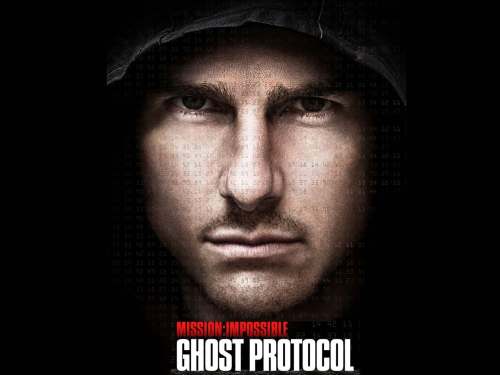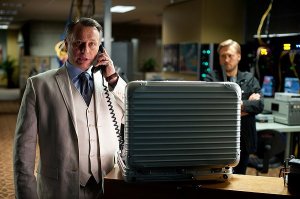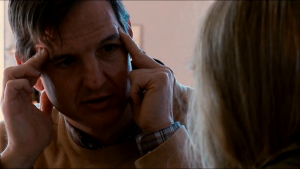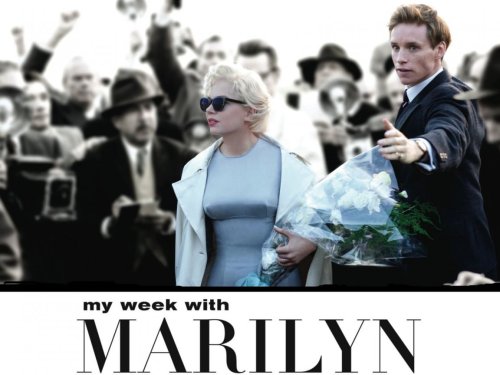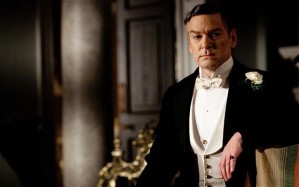Star Rating: 2/5
Last year’s The Inbetweeners Movie was a genuinely funny comedy. Whilst lacking in subtlety, it had a fine mix of intelligent and dim-witted humour, as well as realistic characters and a (semi-)plausible storyline. But in recent years many ‘comedies,’ like Due Date and The Hangover: Part II, have lacked much of what made The Inbetweeners Movie so enjoyable. 21 Jump Street, despite a few instances of amusement, very much goes into the latter category of ‘comedies.’

Jenko (Channing Tatum) bullying Schmidt (Jonah Hill) in their high school days. They did not get on at all whilst they were in the same class.
21 Jump Street is loosely based on the 1987-91 TV series with the same title, which starred a young and then-little known Johnny Depp. 21 Jump Street is about two very dissimilar 1980s former high school classmates. Jenko (Channing Tatum – The Eagle, The Vow, Side Effects) was the well-liked, yet brainless jock, whilst Schmidt (Jonah Hill – Superbad, Moneyball, The Wolf of Wall Street) was the smart, but unpopular nerd.
Despite their differences, Jenko and Schmidt quickly become friends after enrolling in the police academy. Once they finish their course, they become partners on patrol.
However, Jenko and Schmidt are hopeless at their jobs. Subsequently, they are sent to an undercover unit, located on 21 Jump Street. It is there that they’re ordered by their new superior, Captain Dickson (Ice Cube – Ghosts of Mars, XXX2, Rampart), to discover who is behind a drug network that is allegedly based in their former high school. So Jenko and Schmidt go back to their old stomping plain (to find, to their shock, that what was popular in the late-1980s is not anymore), posing as students, to bust the drug dealership before it spreads to other schools.
The plot for 21 Jump Street is simple as well as amusing on a couple of occasions. In addition, the friendship between Jenko and Schmidt keeps viewers interested, due to the chemistry that the two actors share; and the shoot-out scenes are a good laugh and surprisingly gory as well.

Schmidt and Jenko, now friends and cops, apparently dressed as teenagers before going undercover into their old high school. Captain Dickson (Ice Cube) ordering them not to get with any school-girls or teachers.
Yet, there are fewer action scenes than one would have predicted; and, alas, the overwhelming majority of the humour revolves round repetitive, mindless jokes between the two main characters; swearing; and vulgarity. Of course all of this can be tolerable and hilarious in moderation. But the directors, Phil Lord and Chris Miller (Cloudy With A Chance Of Meatballs), have taken it all (shamefully) to the point when even the crude Steven Stifler (played by Sean William Scott in the American Pie series) might call a halt.
Combined with such coarseness in 21 Jump Street are the performances of Channing Tatum and Jonah Hill as Jenko and Schmidt, respectively. The pathetic and overly immature nature of their attempts to behave in a ‘high school manner’ is embarrassingly terrible. Compared to them, Jay Cartwright (played by James Buckley in The Inbetweeners TV series and movie) is a relative grown up! Both Tatum and Hill can do better than this, as the former demonstrated in Coach Carter, and the latter in Superbad and Moneyball.
The poverty of the acting in 21 Jump Street is not Tatum’s and Hill’s alone. Ice Cube; Dave Franco (Superbad, Fright Night, Warm Bodies), playing as Eric, the ‘cool-guy’ of the school; and Brie Larson (Scott Pilgrim vs. The World, Rampart, Relanxious), playing as Schmidt’s love interest, are all insipid and far from funny. The only noteworthy performer is Johnny Depp (Pirates of the Caribbean I-IV, The Tourist, Transcendence), who makes a surprise cameo appearance as his old character, DEA Tom Hanson. That was a clever move by the directors to bring him in. With the film dragging on for a hundred and ten minutes, Depp gives the movie some much needed unpredictability and impetus.
Likewise, it was intelligent of Lord and Miller to alter the dynamics of Jenko’s and Schmidt’s former high school. This entailed that the two main characters had to adapt to virtually new surroundings, which could have given Jenko and Schmidt another dimension to their, otherwise, shallow personalities.

Schmidt sitting with Molly (Brie Larson), the object of his fascination, as he tries to find a breakthrough and unearth who the drug suppliers are.
Yet, the directors badly under-developed these because they give little feel for how the school has changed. Worse, viewers are likely to ascertain almost no appreciation for this particular school or the American high school environment in general; especially, if one compares 21 Jump Street to the excellent Saved By The Bell series, or even the ‘chick flicks’ Mean Girls and John Tucker Must Die. All of those illustrated the different (albeit stereotypical) cliques, and the types of personalities within those cliques, that tend to exist in American high schools. But 21 Jump Street has almost none of it to the detriment of the movie.
Over-all, 21 Jump Street is a light-hearted film with two likeable main actors, who play daftly below their capabilities. The movie has a handful of laughable moments, but they’re overshadowed by the incessant obscene crudity that ruined ‘comedies’ like Due Date and The Hangover: Part II. Neither of those films made audiences cry with laughter as much, or as often as The Inbetweeners Movie. The same can be said for 21 Jump Street.
PG’s Tips


















